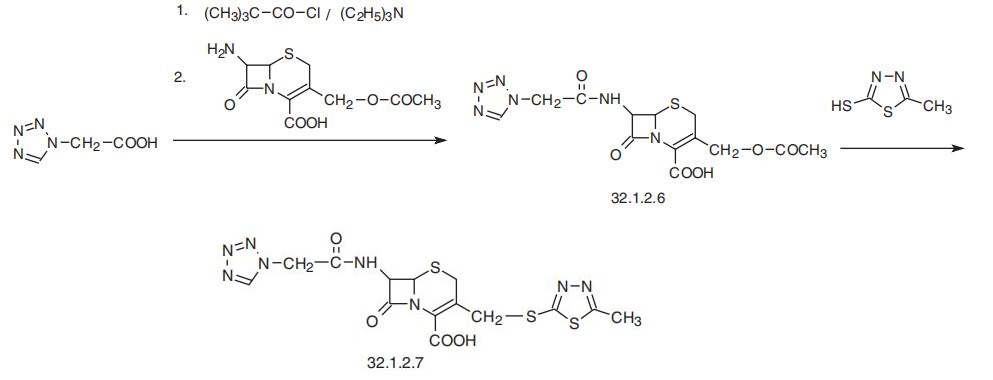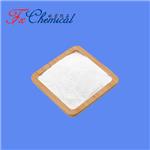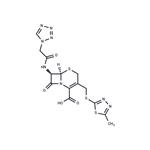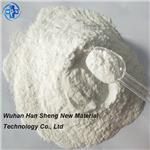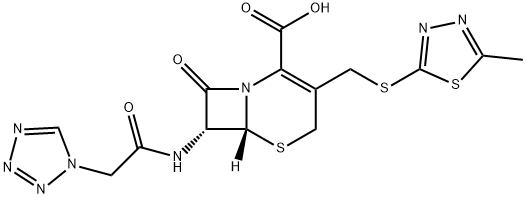
Cefazolin
- Product NameCefazolin
- CAS25953-19-9
- CBNumberCB3396249
- MFC14H14N8O4S3
- MW454.51
- EINECS247-362-8
- MDL NumberMFCD00243010
- MOL File25953-19-9.mol
- MSDS FileSDS
Chemical Properties
| Melting point | 198-200 C |
| Density | 2.01±0.1 g/cm3(Predicted) |
| storage temp. | Hygroscopic, -20°C Freezer, Under inert atmosphere |
| solubility | DMSO (Slightly), Methanol (Very Slightly, Heated) |
| pka | pKa 2.15 (Uncertain) |
| form | Solid |
| color | White to Off-White |
| Stability | Hygroscopic |
| CAS DataBase Reference | 25953-19-9(CAS DataBase Reference) |
| FDA UNII | IHS69L0Y4T |
| ATC code | J01DB04 |
| UNSPSC Code | 41116107 |
| NACRES | NA.24 |
Safety
| Symbol(GHS) |

|
| Signal word | Danger |
| Hazard statements | H317-H334 |
| Precautionary statements | P261-P280-P284-P304+P340-P342+P311 |
| Hazard Codes | Xn |
| Risk Statements | 20/21/22-36/37/38 |
| Safety Statements | 26-36 |
| WGK Germany | 3 |
| HS Code | 2941906000 |
| Hazardous Substances Data | 25953-19-9(Hazardous Substances Data) |
| Toxicity | mouse,LD50,intramuscular,4gm/kg (4000mg/kg),Byoin Yakugaku. Hospital Pharmacology. Vol. 3, Pg. 220, 1978. |
